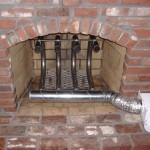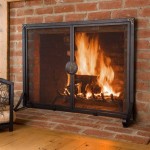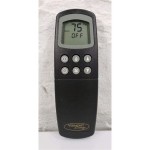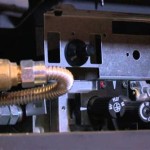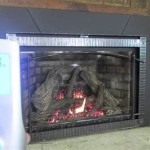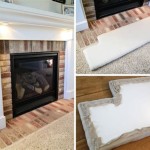Wood Burning Stove Fireplace Design Ideas
Wood burning stoves have long been valued for their efficiency in heating homes and their aesthetic appeal. Integrating a wood burning stove into a fireplace design can create a focal point that is both functional and visually engaging. The design possibilities are extensive, ranging from traditional brick surrounds to modern, minimalist installations. The selection of a suitable design requires careful consideration of factors such as the stove's size, the room's architecture, and the homeowner's personal preferences.
The following article explores various design ideas for incorporating wood burning stoves into fireplace settings, examining considerations for safety, efficiency, and aesthetics. From choosing the right materials for the surround to optimizing airflow for efficient combustion, several factors contribute to a successful wood burning stove fireplace design.
Understanding the Requirements for a Safe and Efficient Installation
Safety is paramount when installing a wood burning stove. Building codes typically mandate specific clearances between the stove and combustible materials, such as wood framing or drywall. These clearances are designed to prevent fires caused by overheating. Consulting local building codes and regulations is crucial before beginning any installation project. The stove manufacturer's instructions will also outline minimum clearance requirements for the specific model.
Proper venting is also critical for safe and efficient operation. Wood burning stoves require a chimney or flue to exhaust smoke and gases safely outside the home. The chimney must be appropriately sized for the stove to ensure adequate draft, which is the flow of air that draws smoke up the chimney. An insufficient draft can result in smoke entering the room, while an excessive draft can cause the stove to burn too quickly and inefficiently. A professional chimney sweep can inspect and evaluate the existing chimney to determine its suitability for a wood burning stove. In some cases, a new chimney or flue liner may be required.
The hearth, which is the non-combustible surface beneath and in front of the stove, must also meet specific requirements. The hearth protects the floor from embers and heat. Building codes typically specify minimum dimensions for the hearth extension, depending on the stove's design and heat output. Common hearth materials include brick, stone, tile, and concrete.
Exploring Different Fireplace Surround Designs
The fireplace surround is the area immediately surrounding the wood burning stove. The design of the surround significantly impacts the overall aesthetic of the installation. Various materials and styles can be used to create a surround that complements the stove and the room's décor.
Brick surrounds are a classic choice, offering a rustic and traditional look. Brick is also a durable and heat-resistant material, making it well-suited for use around a wood burning stove. Brick can be laid in various patterns, such as running bond, herringbone, or stacked bond, to create visual interest. The brick can be left natural or painted to match the room's color scheme.
Stone surrounds provide a more natural and textured look. Stone can be used in various forms, from stacked stone to large, flat stones. The type of stone used can significantly impact the overall aesthetic. For example, fieldstone provides a rustic and earthy look, while slate offers a more contemporary and sophisticated appearance. Stone is also a durable and heat-resistant material.
Tile surrounds offer a wide range of design possibilities. Tile is available in various colors, sizes, and patterns, allowing for a high degree of customization. Tile can be used to create intricate mosaics or simple, minimalist designs. Ceramic and porcelain tiles are both suitable for use around a wood burning stove, as they are heat-resistant and easy to clean.
For a more modern look, concrete surrounds can be used. Concrete can be cast into various shapes and sizes, allowing for a seamless and minimalist design. Concrete can also be stained or polished to create different textures and finishes. Concrete is a durable and heat-resistant material.
The surround can also incorporate elements such as a mantel, which provides a shelf for displaying decorative items. The mantel can be made of wood, stone, or metal. The design of the mantel should complement the overall style of the surround. Considerations for the mantel include its height above the stove, which should be high enough to prevent overheating, the depth of the mantel, which provides space for decorative items and the style of the mantel, which will determine the feeling the overall design gives.
Optimizing Airflow and Efficiency
Efficient combustion is essential for maximizing the heat output of a wood burning stove and minimizing emissions. Several design features can help optimize airflow and improve efficiency.
One important factor is the stove's air intake system. Most modern wood burning stoves have a primary and a secondary air intake. The primary air intake provides air for the initial combustion of the wood, while the secondary air intake provides air for burning the gases released during combustion. Adjusting the air intake controls can regulate the burn rate and heat output of the stove. Some stoves also have a tertiary air intake, which provides air for burning any remaining gases in the combustion chamber. Tertiary air inlets will reduce emissions, making the stove more environmentally friendly.
The design of the firebox, which is the area where the wood is burned, can also impact efficiency. A well-designed firebox will promote efficient combustion by ensuring adequate airflow and heat retention. Some stoves have a catalytic combustor, which is a device that burns off gases and particles before they exit the stove. Catalytic combustors can significantly reduce emissions and improve efficiency. Regular cleaning and maintenance of stoves with catalytic combustors is essential for optimum performance.
The type of wood burned also affects efficiency. Seasoned wood, which has been dried for at least six months, burns more efficiently than green wood. Seasoned wood has a lower moisture content, which means that more of the wood's energy is released as heat rather than used to evaporate water. Hardwoods, such as oak and maple, typically have a higher heat output than softwoods, such as pine and fir. The use of hardwoods also helps the stove achieve a higher temperature, causing it to burn cleaner.
Proper stove sizing is also crucial for efficiency. A stove that is too large for the space will produce excessive heat and may be difficult to control. A stove that is too small will not provide enough heat. The stove's heat output should be matched to the size of the room being heated. Reputable stove retailers can help determine the appropriate stove size for a particular application.
Furthermore, the placement of the stove within the room can impact the distribution of heat. Placing the stove in a central location can help distribute heat more evenly throughout the room. The stove can also be placed near a doorway or hallway to help circulate heat to other parts of the house. A ceiling fan can also be used to circulate warm air downward from the ceiling.
In conclusion, designing a wood burning stove fireplace involves a careful consideration of safety, aesthetics, and efficiency. By understanding the requirements for safe installation, exploring different surround designs, and optimizing airflow and combustion, homeowners can create a fireplace that is both functional and visually appealing.

Fireplace Ideas For Wood Burner Stoves Burning Stove Fitters Inglenook Fireplaces N Fitting

Amazing Indoor Wood Burning Fireplace Home Decor And Garden Ideas Stove Surround Corner Hearth

All Fired Up Tile Fireplace Inspiration Wood Burning Stoves Living Room House Design Home

Modern Wood Stove Guide All You Need To Know 2024 Field Mag

Bespoke Fireplace Design Ideas Scarlett Fireplaces

Fall 2024 In Wood Burning Stoves Living Room Home Fireplace Stove

40 Wood Burning Stove Ideas Fireplace Universe

How To Decorate Around A Wood Stove Rustic Crafts Diy

Choosing A Wood Burning Stove Or Fire For Your Home Stovax Gazco

Fireplace Ideas For Wood Burner Stoves Burning Stove Fitters Inglenook Fireplaces N Fitting
Related Posts

